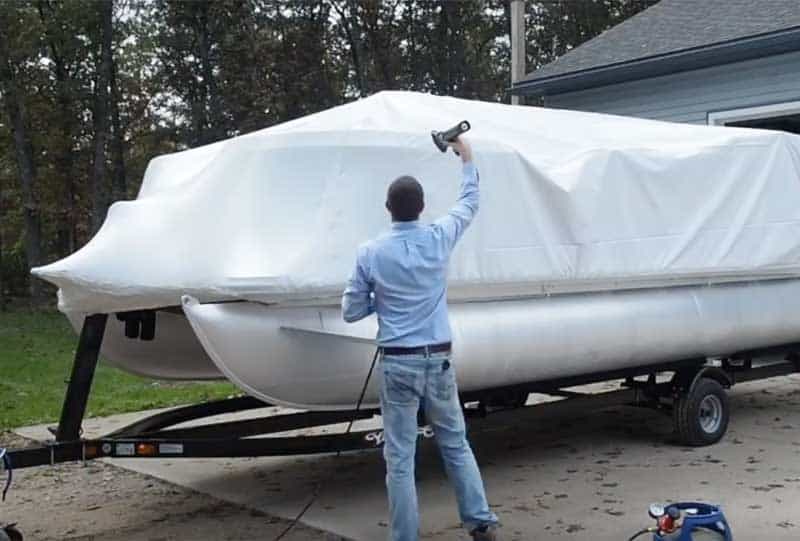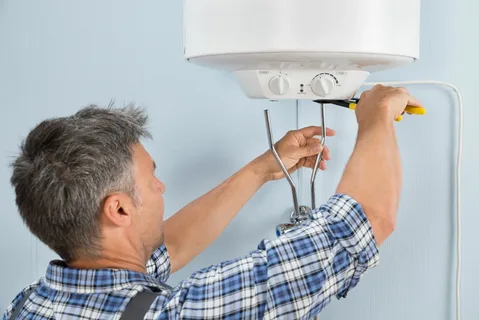Consider investing in shrink wrap if you have a boat that will be laid up for over one season. This is especially true if your boat is stored outdoors where snow and rainwater can settle. Unlike a simple blue tarp, shrink wrap creates a much tighter seal. This can prevent severe damage to your boat come springtime.
Table of Contents
Prevents Hull Damage
Shrink wrap protects your boat from weather hazards like snow, ice, rain, and wind. Whether you transport your boat via low-loader or trailer or store it in a harbor, shrink wrapping will keep it safe from harm during transit and storage. When compared to tarps, shrink wrap offers much more protection. The wrap’s tight seal eliminates air gaps and prevents water from pooling on the boat. It also keeps out contaminants like dirt, dust, and pests.
It’s essential to check the entire vessel before the wrapping process to determine if any parts of the boat require extra padding or protection. This could include outriggers, trolling motors, antennas, and flimsy windshields. Additionally, installing vents in the shrink wrap is critical to avoid moisture buildup that can lead to mold and mildew.
Prevents UV Damage
The sun’s UV rays, especially paint and sealants, can degrade boat materials. Shrink wrapping for boats protects against this damage with its built-in UV inhibitors and opaque nature. In addition, shrink wrap’s tighter seal helps to keep water and debris out while preventing the stretch and tear that tarps often have when wrapped over boats for long-term storage. Additionally, the options for venting in shrink wrap provide even more moisture control, which tarps do not offer. Shrink wrap can also help prevent theft and vandalism because it is tamper-proof and secure. This can also help protect your boat’s value by minimizing depreciation and saving money on repairs or replacements. Choose blue-colored shrink wrap if you store your boat in the winter, as it will absorb heat and reduce potential moisture buildup.
Prevents Water Damage
The most common issue boat owners encounter when storing their boats is water damage caused by snow, rain, and thaw/freeze cycles. This moisture can cause damage to cockpit drains, hulls, and other fittings and lead to leaks. Shrink wrap keeps water off the boat, preventing it from settling on surfaces and damaging core components. While tarps can provide some protection, they’re not as tight as shrink wrap and may tear in high winds such as those experienced when transporting a boat long distance. Shrink wrap provides superior protection against pests and can be customized to include options like desiccant bags and ventilation. Additionally, using a professional to install a shrink wrap ensures the wrapping is done correctly and thick enough to prevent water from pooling underneath.
Prevents Salt Damage
Shrink wrap protects your boat from road salt that can damage the exterior. This is especially important when transporting a boat long distances by low-loader or trailer. The tightly sealed cover also helps reduce movement during transportation and prevents debris from scratching the surface of your boat. Unlike tarps that can be damaged by harsh weather, shrink wrap is made of a rigid plastic that is water resistant and impervious to wind and snow. It is also tamper-resistant and secure, making it an effective deterrent against theft.
Prevents Mold and Mildew
As any boater knows, mold and mildew are common problems on boats. It is tough to keep them away once they start forming. It is also challenging to get rid of them once they are established. Moisture is a critical factor in mold and mildew growth. It thrives in environments where there is humidity and fluctuating temperatures. When you use a cover or tarp to store your boat, they don’t allow for ventilation, which promotes mold and mildew. This is why it is so important to properly clean your boat before winter storage and remove any stains caused by moisture under the wrap or tarp.





